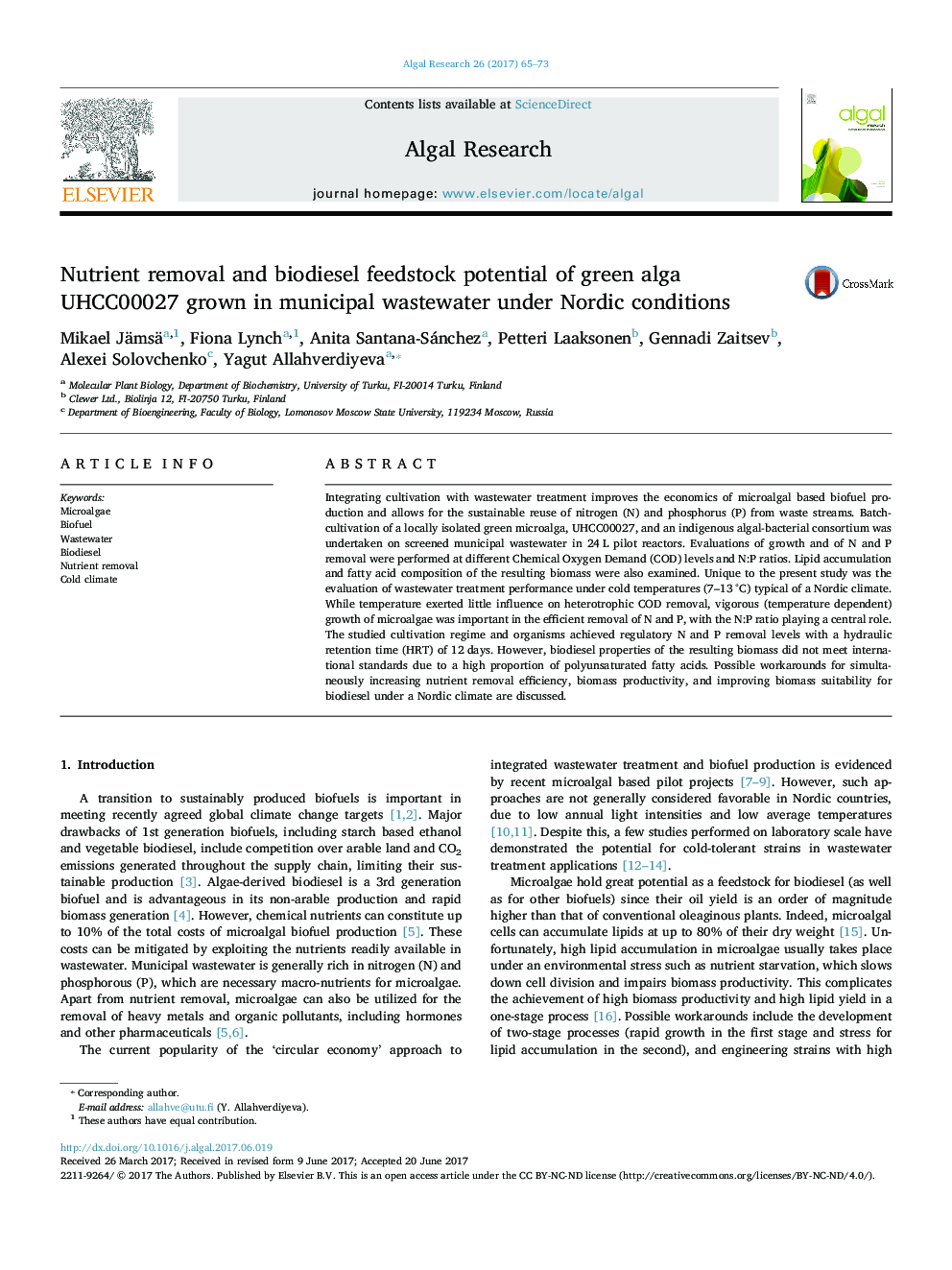| Article ID | Journal | Published Year | Pages | File Type |
|---|---|---|---|---|
| 5478284 | Algal Research | 2017 | 9 Pages |
Abstract
Integrating cultivation with wastewater treatment improves the economics of microalgal based biofuel production and allows for the sustainable reuse of nitrogen (N) and phosphorus (P) from waste streams. Batch-cultivation of a locally isolated green microalga, UHCC00027, and an indigenous algal-bacterial consortium was undertaken on screened municipal wastewater in 24 L pilot reactors. Evaluations of growth and of N and P removal were performed at different Chemical Oxygen Demand (COD) levels and N:P ratios. Lipid accumulation and fatty acid composition of the resulting biomass were also examined. Unique to the present study was the evaluation of wastewater treatment performance under cold temperatures (7-13 °C) typical of a Nordic climate. While temperature exerted little influence on heterotrophic COD removal, vigorous (temperature dependent) growth of microalgae was important in the efficient removal of N and P, with the N:P ratio playing a central role. The studied cultivation regime and organisms achieved regulatory N and P removal levels with a hydraulic retention time (HRT) of 12 days. However, biodiesel properties of the resulting biomass did not meet international standards due to a high proportion of polyunsaturated fatty acids. Possible workarounds for simultaneously increasing nutrient removal efficiency, biomass productivity, and improving biomass suitability for biodiesel under a Nordic climate are discussed.
Related Topics
Physical Sciences and Engineering
Energy
Renewable Energy, Sustainability and the Environment
Authors
Mikael Jämsä, Fiona Lynch, Anita Santana-Sánchez, Petteri Laaksonen, Gennadi Zaitsev, Alexei Solovchenko, Yagut Allahverdiyeva,
